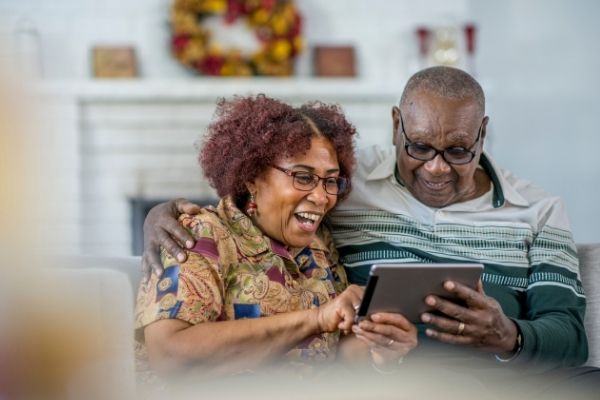For centuries, the connection between older and younger generations has been a foundational part of society. Families would live in the same home or on the same street in order to stay in one another’s lives. Grandparents would help with childcare or housework as their children navigate the realm of early parenthood. Eventually, adult children would care for their parents in turn.
Our society’s structure has since shifted in ways that have severed those connections. We’ve found ways to help seniors stay independent longer, and childcare options are far more accessible. Though these are wonderful things on their own, the impact is substantial. Moreover, exponential advances in technology have widened the gap further. Younger people are increasingly connecting online, and older adults have been widely left out.

Link Generations is focused on rebuilding those connections with programs designed to bring people together across generational divides. During the pandemic, however, meeting in person has become too risky for many. Here are some tips for how seniors can embrace technology in order to connect with their children, grandchildren, and the younger generation as a whole.
Start With Safety in Mind

Accessible Devices
Many people turn to their cell phones for video chats, but it’s not always easy to enjoy a video chat on a small screen. Many seniors prefer using larger devices, such as tablets and laptops, for video calls. You can make your devices even more accessible through some simple measures. For example, you can look at the accessibility section in your device’s “settings” menu. Here, you can increase text size, add voice commands, and many other options that might make your device easier and more intuitive.
A good pair of headphones is another simple, effective tool for video chat accessibility. Because the video and audio are often slightly out of sync, listening comprehension is hard on video chat for people who have perfectly fine hearing. If you have hearing problems, this, paired with the ambient noise in your home, can make understanding a video chat nearly impossible. Headphones block that noise and direct your loved one’s voice directly into your ear — meaning you’ll have a much easier time understanding them.

Connecting Through Social Media
If you haven’t already joined social media, you might wonder whether or not now’s the time to do so. There are obviously pros to joining networks like Facebook and Instagram — you get to see updates from friends and family, check in on people, and see photos of your loved ones. However, there are cons to these social networks as well.
For example, many studies have found that using social media increases feelings of depression and anxiety. Negative posts get more engagement — and, therefore, come up more often — and these can have a profound effect on your mood. Setting up a shared album with your close loved ones may be a better way to stay in touch while avoiding the more toxic aspects of social media.
During the pandemic, staying connected is harder than ever. That said, it’s far from impossible. Explore the technological options available to see what helps you stay in touch with the people who matter most.
Visit Link Generations often for more inspirational stories that link generations.
Photo Credit: Pexels


